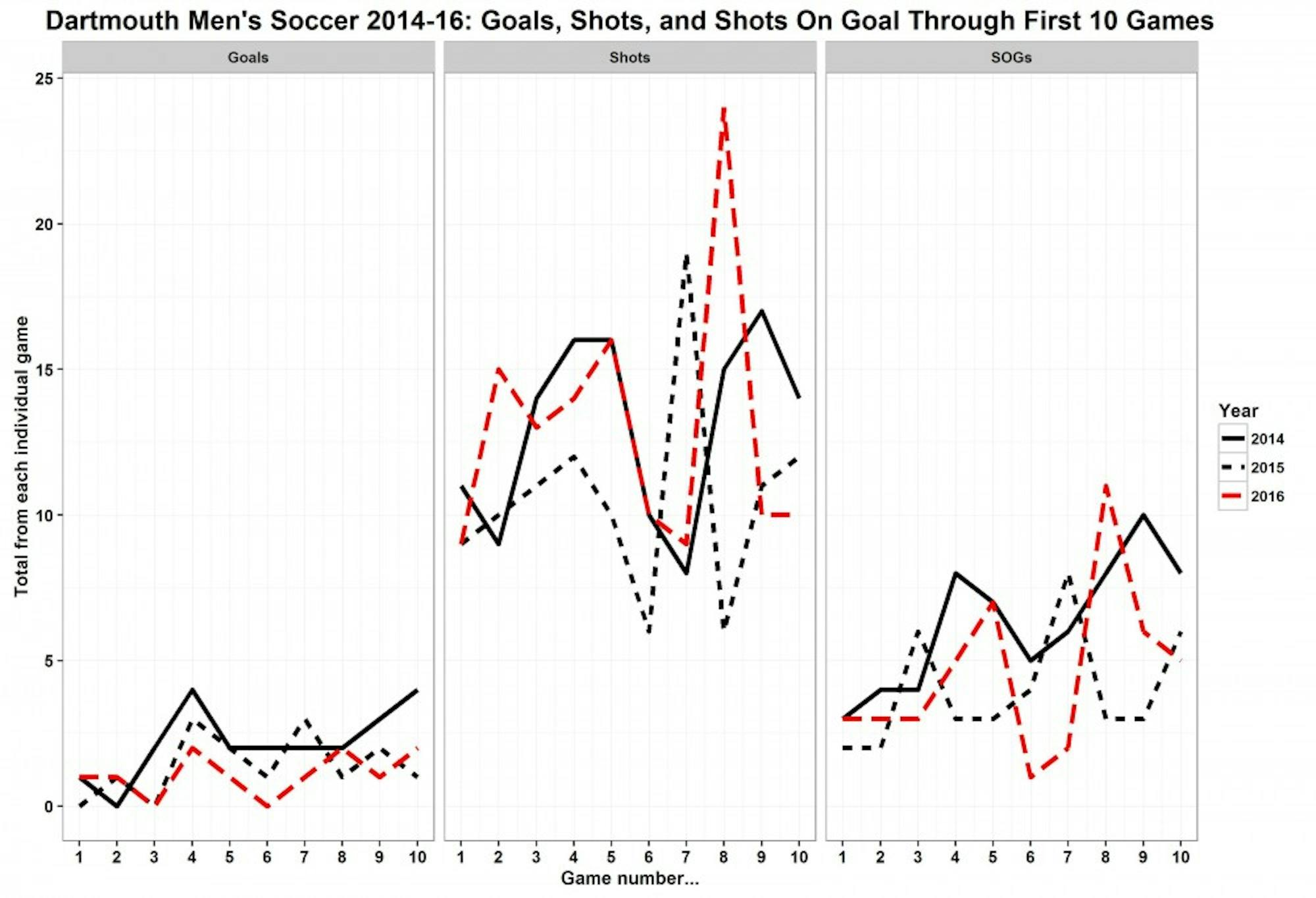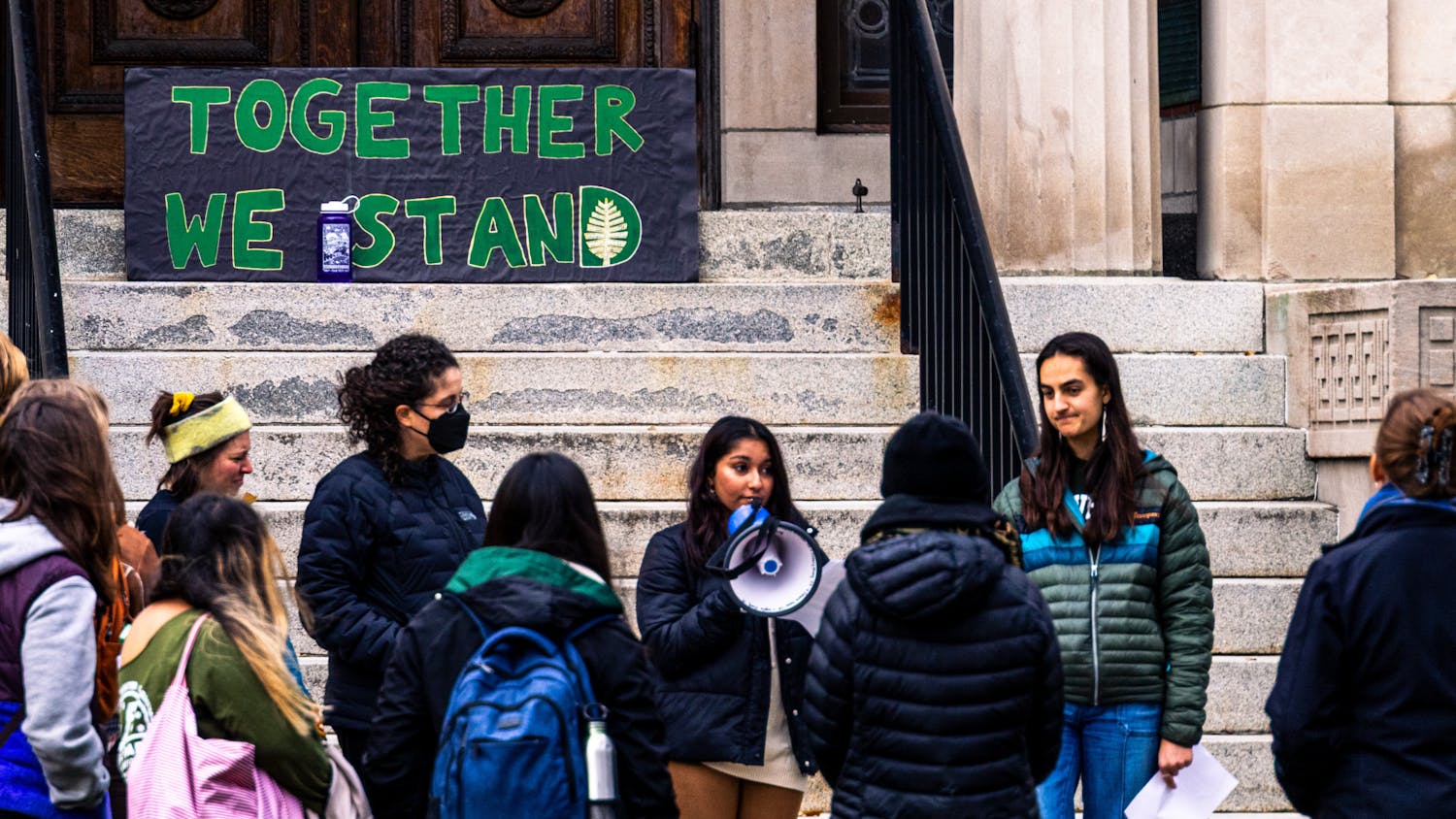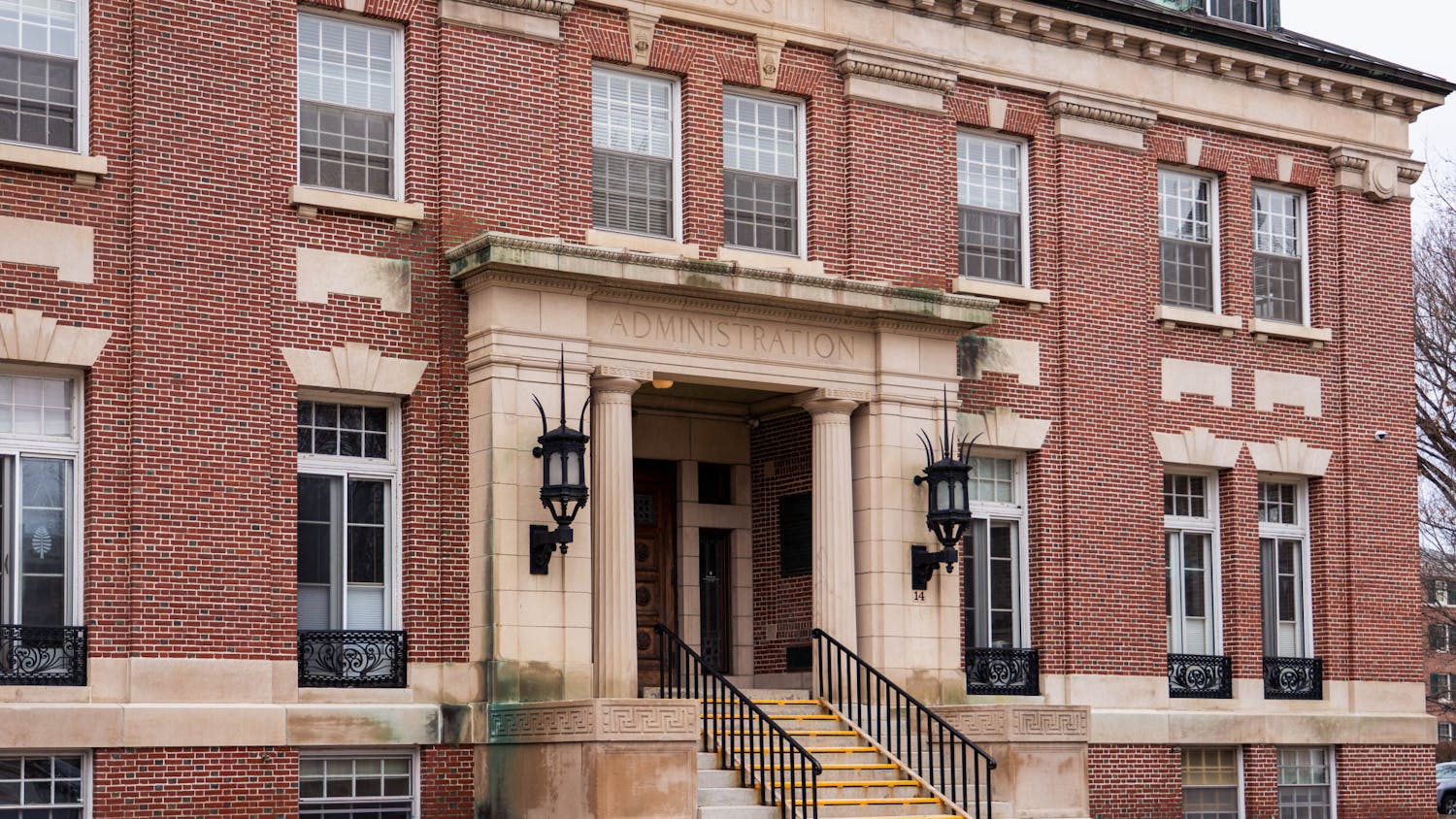The men’s soccer team is the only varsity team at Dartmouth to achieve back-to-back Ivy League titles in the past few years. But even that claim might somehow understate the program’s successes when considering the critical role the freshman class played in both championship seasons.
In 2014, Matt Danilack ’18, Wyatt Omsberg ’18, Jonathan Nierenberg ’18 and Tyler Dowse ’18 made up the formidable freshman crop capable of holding down the team in the midfield and defense. A year later, freshmen Eduvie Ikoba ’19 and Amadu Kunateh ’19 tied for the most individual goals on the team. As a whole, the freshman class combined for just under 50 percent of Dartmouth’s goal production.
With one more year of development under their belts, these two stellar classes are primed to maintain, if not expand, on the Big Green’s dominance. Yet through 10 games, the 2016 season has not necessarily been smooth sailing.
A current 3-2-5 record makes for a .550 winning percentage, which is below the .750 mark from 2014 and the .650 percentage from 2015 at the same points in the year. Goal production has noticeably declined as well, down from 2.2 (2014) and 1.4 (2015) averages to a 1.1 mark in 2016 through 10 matches. Five of the 10 contests have frustratingly ended in ties, forcing the Big Green to play an extra 100 minutes of soccer in double overtime. In four of those, Dartmouth squandered a lead after scoring the first goal of the game. In its Ivy League season opener against Princeton University, the team lost a 2-0 lead against a 10-man Tiger team and settled for a 2-2 tie.
But before any panic or real concern about this team’s developmental arc should set in, it’s worth considering its strength of schedule as an important context. A gauntlet of an early-season schedule entailed games against powerhouses, including the University of Kentucky, Xavier University, the University of Washington and Seattle University. As of last Friday, that meant Dartmouth had experienced the second hardest schedule in the entire country according to RPI rankings.
Of course, it’s not as if this grueling slate of games left Dartmouth out of its league. Against the four notable sides mentioned above, Dartmouth drew twice and won once, and after its first 10 games, remains on the national radar as a formidable team. Nevertheless, as head coach Chad Riley stressed, the ties, lost leads and greater challenges can be largely ascribed to this competitive out-of-conference start to the year.
When speaking about the four games that ended in a tie after Dartmouth lost its lead, Riley attributed this trend to the reality that when playing good teams, “they’re going to get chances.”
“I wouldn’t say it’s a fault. Sometimes when you have the ball more [with a lead], and had to play more,” he said. “So instead of defending all the time you’re attacking, so it’s a different mindset being switched on for the other team’s one or two chances.”
Under sudden death rules, which give the win to the team that scores a goal after regulation play ends, overtime periods often prove conducive to much more conservative styles of plays, making game-winners all the less likely.
Omsberg, a starting defender and assistant captain, said one of the team’s strengths in the past few years has been its fitness level, which proves essential when playing longer games.
“I don’t think we’ve lost an overtime game since I’ve been here,” he noted. “Especially in college soccer, you get a little bit nervous in overtime. You don’t want to make any mistakes, the style of play starts to change.”
Playing a challenging pre-conference schedule has been the norm for Dartmouth since Riley’s arrival four years ago. Although the past pre-conference schedules may not have been as difficult as this year’s, this trend has served as key preparation for what led to Ivy League titles in the last two seasons, as well as a measuring stick — on a national stage — for the team’s growth. Accordingly, team co-captain Manny Arteaga ’17 characterized these tough early schedules as valuable in setting the standard for the team.
Still, the decline in goals scored is certainly a concern for the players and coaches. Much of the struggle has to do with early season competition and stinginess from opposing defenses.
For Arteaga, the decline also encompasses a focus on Dartmouth’s own defensive character to set the foundation, from which all the team’s other exploits stem.
“We’ve definitely seen a decline in goals this year, but I think it’s in the nature of building a smarter team,” he said. “Sometimes you focus more on the defensive block [and] building from the back.”
While the goal-scoring output shrunk in 2016, other basic offensive metrics, including shots and shots on goal have not experienced a decline compared to the 2014 and 2015 seasons. Eleven goals is the lowest total through the first 10 games in the last three years, but Dartmouth still has tied its output for shots at this mark in 2014 to 2016, at a 13 per game clip, and has a middling shots on goal total in this span. In other words, these less important but still informative measures indicate Dartmouth’s offense has not stumbled too much. Instead, given the very strong statistical correlation between shots and goals, we should expect the Big Green to find the net more often as the season progresses.
If the Big Green does begin to reestablish its rhythm, its action on the wings will surely play a large part in a third consecutive championship run. Both in 2016 and in the recent past, Dartmouth’s offensive attack frequently emerges from combinations down the flanks of the field, with fullbacks and midfield wingers spearheading this movement upfield.
Riley praised the team’s wingers and fullbacks and their importance in getting involved in attacks, which are central to his team’s style of play.
“It depends a little on the game, [playing] against narrow teams,” he said. “We’ve got guys willing to run into the box. So I think no matter what team [we’re] playing, doing well in wide areas is always going to be a key to our identity.”
Flank play in 2016 has also benefited from the repositioning of Alexander Marsh ’17. Although he played in the midfield during most of his Big Green career, the senior moved to right fullback during his senior year. However, that hasn’t diminished his role in the offense by much. Constantly making sprints down the right flank and whipping crosses into the goalmouth, Marsh has assumed a very active presence in generating offense from the wings.
That threat is complemented nicely on the opposite side of the pitch, where Dowse, a leftback, makes similar runs. Dowse’s involvement in Dartmouth’s offensive attack was clearest in the Ivy League opener against Princeton. Taking a pass from Noah Paravicini ’19 and sprinting down the left side, Dowse cut inside approaching the goal, lost his defender and coolly slid the ball into the net. Of course, the fullback play hasn’t always led to such direct goal-scoring results, but the flank threats these defenders provide by opening up on the wings with off-ball runs and overlaps has formed a key part of Dartmouth’s offense.
This aspect of the team’s playing style can also shed light on its lacking goal production. While crosses repeatedly flew into the box to create scoring opportunities in past seasons, Dartmouth hasn’t had as much success in finishing off the attacks and utilitzing such plays this year, Arteaga noted.
“I think that’s the biggest difference,” he said. “Getting more crosses causes chaos in the box. That’s where we found our greatest potential for scoring goals.”
With two consecutive shutout victories against the University of New Hampshire and Yale University this past week, the Big Green is starting to regain its creative identity on offense and suffocating pressure on defense. Currently, the team is in a four-way tie for first in the conference, with Columbia University, Harvard University and Brown University. As it begins to wade deeper into conference play terrain, especially with a game against the University of Pennsylvania this Saturday, Omsberg noted his team’s dominance on the pitch will not abate any time soon.
“I don’t think we’re that far off,” the junior defender said. “This team has as much if not way more potential than past season. We’re really confident, we know we have a strong group. I think it’s just focusing on the little details, closing out games. I think we’re really close.”




